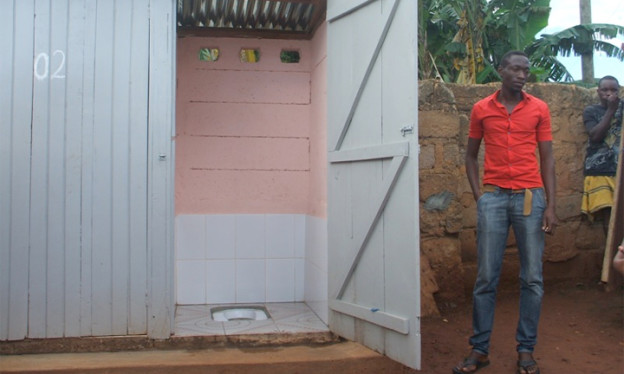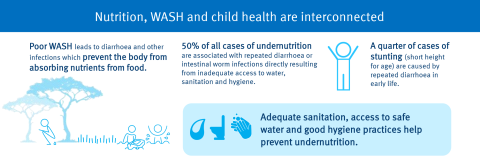Back to all articles
World Toilet Day 2015 — Guest Posting

Photo credit water.org
by Rachelle Ackerman
As we approach World Toilet Day 2015, I would like to offer some reflections. On the surface, it is a day to raise awareness about the 2.5 billion people worldwide who lack improved sanitation and the 1 billion who lack even basic sanitation and are forced to defecate in the open. This subjects them to both disease and shame, and violates universal human rights. A simple pit toilet makes a world of difference to a community that otherwise has no way to contain its waste. I have seen this first-hand traveling in rural Zimbabwe when I was in college. I get what a tremendous impact even that simple innovation makes and how crucial it is for ALL of the world’s population to have access to that basic level of sanitation.
But it’s not enough. The specific focus of this year’s World Toilet Day is to highlight the link between lack of access to toilets, and malnutrition. Half of the global cases of childhood undernutrition can be linked to inadequate water, sanitation and hygiene. Most of the world’s populations that lack even a pit toilet are rural people who support themselves at least in part by subsistence agriculture. This is where it strikes me that urine diversion technology—no, not even technology but rather education—could make a really huge impact.

Photo credit: worldtoiletday.info
During the academic year I spent in Zimbabwe, I saw people in rural communities wander far and wide gathering cow patties for fertilizer in their gardens. There was not much manure available. The soils were poor. If they had known the value of their own urine in aiding their crop growth, what a difference it could have made! Imagine how much greater the impact in battling malnutrition if, along with each pit latrine there came a container to collect urine for boosting crop yields. Or better yet, if the latrines were all constructed as urine-diverting toilets.

Another part of my brain wanders to what I have learned about first world toilet problems since becoming involved with the Rich Earth Institute. I used to think that the only thing really meriting consideration here at home regarding toilets was whether or not they were low-flush. Many of our communities have problems with water shortages but here in this country, I thought, we have wastewater treatment facilities and septic systems that take care of any pollution problems.
Not so. It turns out, many of our wastewater treatment facilities are not designed to remove nitrogen or phosphorous. Pathogens are removed, but the nutrients that impair over 15,000 of our waterways are simply released with the treated wastewater. And when septic systems are concentrated in densely settled areas, the nutrients leach into groundwater at damaging levels. It’s not an abstract theoretical danger; it’s the present-day reality of communities in Pennsylvania, Rhode Island, Chesapeake Bay, Long Island, Cape Cod and elsewhere, where well water is undrinkable or ecosystems and economies are being destroyed by nutrient pollution. Just take a look at the results of an algal bloom in the Peconic River on Long Island from May of this year:

Photo credit: nytimes.com
So on this World Toilet Day, I want to remember the billions around the globe and here at home who are without basic, safe toilets. But I also want to bear in mind the next level of thinking we need to reach regarding toilets to truly, thoroughly, and sustainably protect human health and the environment.

